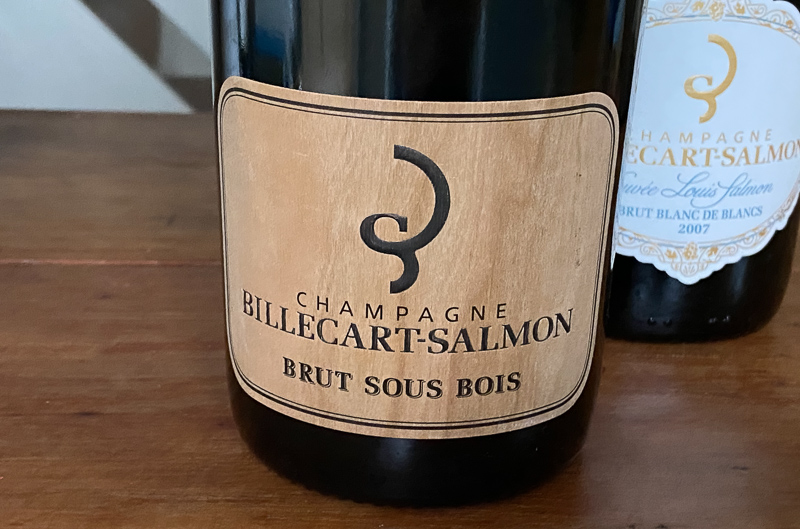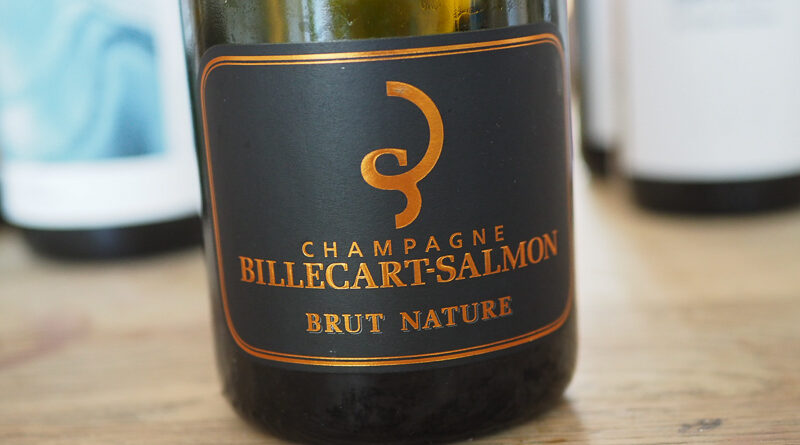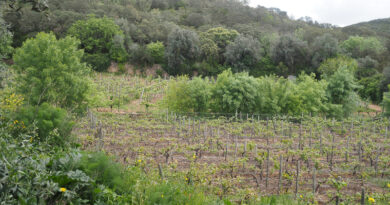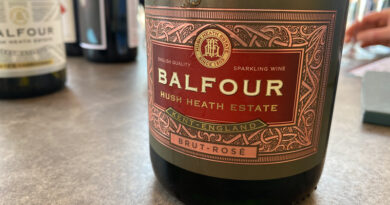Champagne Billecart-Salmon’s Brut Nature, Sous Bois and Cuvée Louis Salmon
Jamie Goode tastes three of the top wines from Champagne Billecart-Salmon with Mathieu Roland-Billecart, who since 2019 has been CEO of this family-owned house.
Billecart-Salmon is a Champagne house founded in 1818, when Nicolas Billecart married Elizabeth Salmon. The two families had been in the same village since the 16th century, and the house has stayed in the family for the last 202 years. It’s rare to find a Champagne house like this that has stayed so long in the original family.
They are based in Mareuil-sur-Aÿ, a small village a couple of kilometres from Epernay, and source their grapes from vineyards within a 20 km radius. ‘This isn’t because we are lazy,’ he says, ‘but because all the premier and grand cru vineyards are within 20 km.’
Billecart is known for its signature cold fermentation of base wines, which is a slow process. ‘This extracts a level of finesse and elegance in the wine that you can’t get when you work quickly,’ explains Mathieu. They use a mix of stainless steel vinification (which gives purity and control), and barrels. They have over 400 Burgundian barrels that average over 15 years in age, and they also have some 8000 litre foudres.
Billecart also delay their releases. ‘You can’t cheat with time,’ he adds. ‘If you work with the best cru, they will take some time to settle.’ Their vintage wines aren’t released before the age of 10.
There is a new Champagne in the range: the Brut Nature. Fermentation is the same as with the other wines, but the difference is the wine put in the bottle. ‘I don’t like acidic Brut Natures,’ says Mathieu, ‘so I don’t want to produce one. I want a wine that is rounded and reaches balance, and we have done this by using multiple harvests through a solera system.’ There are 10 different harvests in this wine. The base is 45% from 2015, but then 45% is from the nine vintages of 2006-2014. Then the wine ages for longer on lees in the cellar, allowing it to gain weight and structure. Also, the liqueur d’expedition that they use at bottling for this wine has more fullness and richness, to help the wine reach balance in the absence of dosage.
The Brut Nature replaces the Extra Brut, which had been progressively drier. ‘All our cuvées have been coming down in dosage,’ says Mathieu, citing two reasons. ‘First, people’s taste is evolving. Second, the maturity levels in Champagne because of the warm summers mean that it is easier to get [flavour] maturity.’
Champagne Billecart Salmon Brut Nature NV France
12% alcohol. This is 40% Pinot Meunier, and 30% each of Pinot Noir and Chardonnay, with zero dosage. It’s fresh and lively, with good acidity, but also some richer notes of honey, toast and spice, with a lemony core complemented by some white peach and quince notes. The fruity character is emphasized by the lack of dosage, which gives the wine a lightness in the mouth. Cherry and apple notes on the finish. I like it, but I’m not blown away by it. 91/100

Louis Salmon was the brother of Elizabeth Salmon, and the first chief winemaker for the house, and his name is now used for the Blanc de Blancs vintage wine. ‘We focus on only Côte de Blanc Grand Cru,’ he says, and four villages – Chouilly, Mailly, Cramant and Mesnil-sur-Oger. This vintage has just three (no Mailly). They tend to use older vines. ‘2007 is an underrated year,’ he says. ‘It is the last time in 20 years when we have produced our three prestige cuvées.’ He says it has amazing longevity, and this wine has 20 years ageing potential. 2006 was rich and round, but 2007 is more linear and mineral. In this occasion they used a high proportion of wine vinified in barrel (50%) to provide richness. The dosage is 7 g/litre.
Champagne Billecart-Salmon Cuvée Louis Salmon Brut Blanc de Blancs 2007 France
12.5% alcohol. Beautiful aromatics on the nose with keen citrus, a hint of apple, and subtle honey and nuts. The palate is bracing and precise with lovely acidity under a compact, dense layer of crystalline citrus fruit and green apple, with just a touch of peach and nut richness. This shows lovely depth of flavour, as well as tension and structure that suggest it’s a wine for the long haul. Serious and assured. 94/100

The final wine of the three is the Sous Bois. ‘A long time ago all Champagne was done in barrels,’ says Mathieu. ‘After WW2, hygiene levels and expectations were a bit different from what they are today, and people that had money started invested in stainless steel because it was easier to clean and wasn’t going to rot. My great uncle did this in the 1950s.’ During that decade they moved entirely to stainless steel. ‘It suits the vast majority of what we do because it preserves the finesse and elegance.’
But the one thing stainless steel can’t do is give the base wine microoxygenation. Wood is the only way to do this. Francois, Mathieu’s predecessor, brought back the barrels in the early 1990s, starting small. Now they have 400 of them, which is about 10-15% of their fermentation capacity.
Sous Bois is 100% vinified in barrels and is aged until March to May, to make a wine that is broader and richer. The wine is a third each of the main varieties, with two-thirds premier and grand cru grapes, and it ages for a long time. This is a base of 2010, which is older than a majority of the presige cuvées on the market. The goal is not to make an oaky wine, so the barrels are old.
Champagne Billecart-Salmon Sous Bois NV France
Rich, bready, toasty aromas on the nose with some dried fruit and candied lemon notes. The palate is broad, rich but focused with lovely lemon and pear notes as well as some spice and a lovely acid line. There’s real depth here, with appealing pastry notes, but they aren’t too obvious and rich, supplementing the crystalline citrus fruit. Very fine and linear, and really quite special. 93/100
Find these wines with wine-searcher.com




